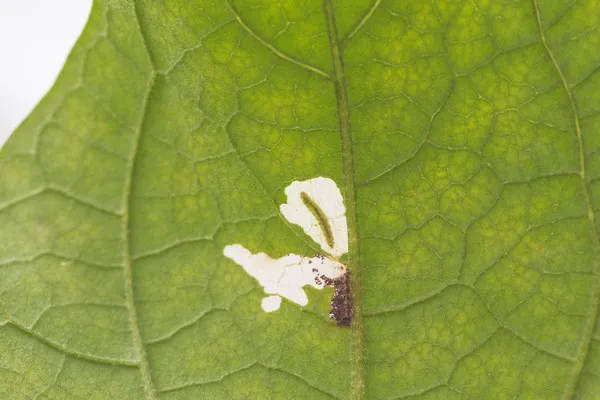The tomato leaf miner Tuta absoluta, which originates from South America, has been popping up everywhere for the last twelve years. This tropical moth particularly likes protected crops grown in nice and warm conditions. But this moth is a true nuisance that is also a master of concealment. So, be extra alert if this moth decides to visit your greenhouse or farm. In order to tackle this pest effectively, it is essential to keep the following things in mind:
The tomato leaf miner originates from Peru and has spread throughout South America. Then, in 2007, the moths also appeared in Spain. Since then, Tuta absoluta has become one of the largest pests of tomato plants in the Mediterranean and other warm parts of Europe. The moths have also made their appearance in the Middle East, India, Bangladesh, Africa, and Central America.

In warm countries, this moth lives freely in nature, but this moth has also become a pest in heated greenhouses. In a temperate climate, the moth cannot survive outside the greenhouses, thus, the warmer the environment, the bigger the problem.
These moths not only like tomatoes but also have a taste for more relatives of the nightshade family of plants. They are also fond of potatoes, aubergines, sweet peppers, Tobacco, and weeds such as Datura stramonium, Lycium chilense, and Solanum nigrum.
The caterpillars of the tomato leaf miner moth live inside the leaves of plants. Since the caterpillars crawl into the leaves, control with chemical products is not effective. In addition, as Tuta absoluta has been combatted with these agents so frequently, it has become resistant to nearly all chemicals.
If you're not sure if there are moths in the crop or if you would like to find out how many there are hiding, you can use the Deltatrap pheromone trap to monitor the population.
Tuta absoluta can be biologically controlled with Mirical. This product contains the predatory bug Macrolophus pygmaeus, which hunts for the eggs and moths. After all, prevention is better than the cure! If you want to stay a few steps ahead of a pest, it's important that the plant breeder already starts with the release of the biological beneficials.
In southern Europe, the very useful predatory bug Nesidiocoris tenuis helps to control Tuta absoluta, but in protected crops in northern Europe this predatory bug does more harm than good because it damages the crop. Chemical control of Nesidiocoris tenuis is not an option, as it will also kill Macrolophus pygmaeus.
Years of research as well as recent practical experiences have shown that Tuta absoluta can also be controlled very effectively with insect-parasitic nematodes. The product Entonem (the nematode Steinernema feltiae) is sprayed on the leaf and penetrates the caterpillar through a natural body opening.
If the females and males of the tomato leaf miner are unable to find each other, then logically reproduction stops as well. Koppert's Tutasan product can be helpful in keeping the males and females apart. Tutasan contains a pheromone and a water trap. The pheromone attracts the males, which then drown in the water.
The Deltatrap pheromone trap used in combination with Koppert's Pherodis pheromone dispensers can also help you to effectively combat the pest. The males are lured into the trap, after which they stick to an adhesive surface allowing you to count them.
Finally, it's good to keep in mind that the caterpillars cannot survive longer than three weeks without food.
For more information:
Koppert Biological Systems
info@koppert.com
www.koppert.com
